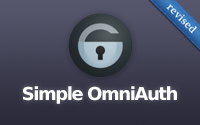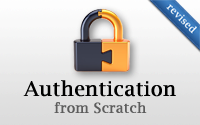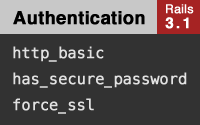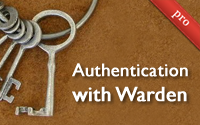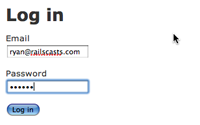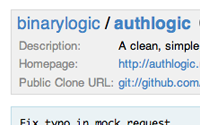Categories
- Active Record
- Active Resource
- Active Support
- Administration
- Ajax
- APIs
- Authentication
- Authorization
- Background Jobs
- Caching
- Code Walkthrough
- Controllers
- Debugging
- Deployment
- eCommerce
- Forms
- Mailing
- Models
- Performance
- Plugins
- Production
- Rack
- Rails 2.0
- Rails 2.1
- Rails 2.2
- Rails 2.3
- Rails 3.0
- Rails 3.1
- Rails 3.2
- Rails 4.0
- Refactoring
- Routing
- Search
- Security
- Testing
- Tools
- Views
Facebook Authentication
This will show how to create a new facebook application and configure it. Then add some authentication with the omniauth-facebook gem and top it off with a client-side authentication using the JavaScript SDK.
(12 minutes)
Simple OmniAuth (revised)
OmniAuth makes it easy to do user authentication through a third party provider such as Twitter or Facebook. Learn a simple approach in this episode.
(11 minutes)
Authentication from Scratch (revised)
Simple password authentication is easy to do with has_secure_password. Here you will learn how to make a complete Sign Up, Log In, and Log Out process as well as restrict access to certain actions.
(13 minutes)
Authentication in Rails 3.1
Here I show off three new features in Rails 3.1 that will help with authentication: easier HTTP Basic, SecurePassword in the database, and forcing SSL.
(7 minutes)
Authentication with Warden
Warden makes it easy to move authentication up into Rack middleware. This means authentication can be accessed outside of a Rails controller such as in routes or in a mountable engine.
(12 minutes)
Authentication from Scratch
Password authentication is not too complicated to make from scratch, it will also help to get a better understanding of how it works.
(15 minutes)
Simple OmniAuth
Authentication is incredibly simple to add with just OmniAuth if you don't need username/password or multiple authentications per user.
(9 minutes)
Authlogic
Authentication can get very complex. In this episode I show how Authlogic can handle this complexity while you stay in control of how it is presented to the user.
(14 minutes)


